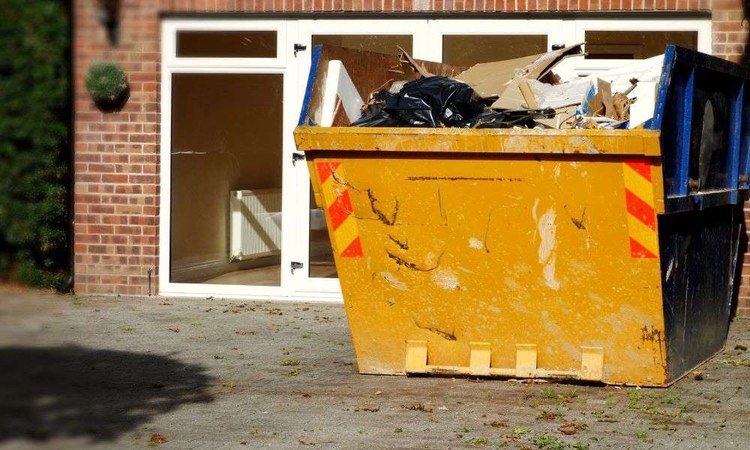The Ultimate Guide to Dumpster Rental
Dumpster rental services are essential for various projects, from home renovations to large construction sites. This comprehensive guide provides everything you need to know about dumpster rental, including the benefits, types of dumpsters, how to choose the right size, cost factors, and tips for a smooth rental experience. Whether you're a homeowner, contractor, or business owner, understanding the ins and outs of dumpster rental can save you time, money, and hassle.

What are the benefits of dumpster rental services?
Renting a dumpster offers numerous advantages for both residential and commercial projects. First and foremost, it provides a convenient and centralized waste disposal solution, eliminating the need for multiple trips to the landfill. This not only saves time but also reduces transportation costs and vehicle wear and tear. Dumpster rental services also promote a safer work environment by keeping debris contained and minimizing potential hazards on-site.
Additionally, dumpster rentals contribute to environmental sustainability by ensuring proper waste segregation and disposal. Many rental companies have partnerships with recycling facilities, helping to divert recyclable materials from landfills. For businesses, renting a dumpster can improve overall efficiency and productivity by streamlining waste management processes.
What types of dumpsters are available for different projects?
Dumpster rental companies offer a variety of container types to suit different project needs. The most common types include:
-
Roll-off dumpsters: These are the most versatile and widely used containers, suitable for both residential and commercial projects. They feature an open-top design and come in various sizes.
-
Front-load dumpsters: Typically used for ongoing commercial waste management, these containers are regularly emptied by front-loading garbage trucks.
-
Rear-load dumpsters: Similar to front-load dumpsters but emptied from the rear, these are often used in areas with limited space.
-
Compactor dumpsters: Ideal for businesses generating large volumes of waste, these containers have built-in compactors to maximize capacity.
-
Specialized dumpsters: Some projects may require containers designed for specific materials, such as concrete, yard waste, or electronic waste.
How do you choose the right dumpster size for your project?
Selecting the appropriate dumpster size is crucial for cost-effective waste management. Common dumpster sizes range from 10 to 40 cubic yards, with 20 and 30-yard containers being the most popular for residential projects. To determine the right size, consider the following factors:
-
Project scope: Estimate the volume of waste you’ll generate based on your project type and scale.
-
Available space: Ensure you have enough room on your property to accommodate the dumpster.
-
Weight limits: Be aware of weight restrictions for different dumpster sizes and types of waste.
-
Local regulations: Check if your municipality has any restrictions on dumpster sizes or placement.
-
Cost-effectiveness: While it’s tempting to opt for a larger dumpster, it may be more economical to rent a smaller one and schedule multiple pickups if needed.
What factors influence the prices of dumpster rental?
The cost of renting a dumpster can vary significantly based on several factors. In Canada, dumpster rental prices typically range from $200 to $800 per week, depending on the size and location. Key factors affecting the price include:
-
Dumpster size: Larger containers generally cost more to rent.
-
Rental duration: Longer rental periods may incur additional fees.
-
Type of waste: Disposing of certain materials, such as hazardous waste, may result in higher costs.
-
Location: Prices can vary depending on your proximity to the rental company and local disposal fees.
-
Weight limits: Exceeding the weight limit can lead to additional charges.
-
Seasonal demand: Prices may fluctuate during peak renovation seasons.
| Dumpster Size | Average Weekly Rental Cost (CAD) | Typical Weight Limit (lbs) |
|---|---|---|
| 10 yard | $200 - $300 | 2,000 - 4,000 |
| 20 yard | $300 - $400 | 4,000 - 6,000 |
| 30 yard | $400 - $500 | 6,000 - 8,000 |
| 40 yard | $500 - $800 | 8,000 - 12,000 |
Prices, rates, or cost estimates mentioned in this article are based on the latest available information but may change over time. Independent research is advised before making financial decisions.
What tips ensure a smooth dumpster rental experience?
To make the most of your dumpster rental and avoid potential issues, consider the following tips:
-
Plan ahead: Book your dumpster well in advance, especially during peak seasons.
-
Obtain necessary permits: Check with your local authorities if you need a permit to place a dumpster on public property.
-
Prepare the site: Clear the area where the dumpster will be placed and ensure easy access for delivery and pickup.
-
Know what you can and can’t dispose of: Familiarize yourself with prohibited items and local regulations regarding waste disposal.
-
Load the dumpster properly: Distribute weight evenly and avoid overloading the container.
-
Communicate clearly with the rental company: Discuss your project needs, timeline, and any special requirements upfront.
-
Consider weather conditions: If renting during rainy seasons, consider covering the dumpster to prevent water accumulation and additional weight charges.
By following these guidelines and understanding the various aspects of dumpster rental, you can ensure a more efficient, cost-effective, and environmentally responsible waste management solution for your project. Whether you’re tackling a home renovation, managing a construction site, or organizing a community cleanup, the right dumpster rental can make all the difference in your project’s success.




